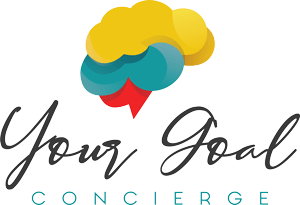Beyond Efficiency: How AI Drives Innovation and Competitive Advantage
Erica Kesse
The body content of your post goes here. To edit this text, click on it and delete this default text and start typing your own or paste your own from a different source.

As a CEO, your leadership sets the tone for your organization’s culture. But are you fostering an environment where employees feel safe to share ideas and concerns? Psychological safety, a critical factor for mental health, is the foundation of high-performing teams. This guide explores how CEOs can model boundaries to create a mentally healthy workplace, backed by research and practical steps. Why Psychological Safety Matters for Mental Health Psychological safety—where employees feel secure to take risks without fear of judgment—directly impacts mental health. A 2015 Google study, Project Aristotle, found that psychological safety was the top predictor of team success, driving innovation and collaboration. For CEOs, fostering this environment starts with intentional leadership. Poor psychological safety leads to stress, disengagement, and higher turnover, costing businesses billions annually, according to Gallup’s 2023 workplace report. How CEOs Can Model Boundaries for Psychological Safety Set Clear Communication Norms: Announce no after-hours emails unless urgent. This signals respect for personal time, reducing employee stress. Lead with Vulnerability: Share your own workload challenges or mental health strategies. A 2022 Deloitte study found that 80% of employees trust leaders who openly discuss mental health. Encourage Feedback: Create anonymous channels for team input, showing that dissent is welcome. Train Managers: Equip leadership teams to recognize burnout and enforce boundaries, reinforcing a culture of care. CEOs who prioritize psychological safety through boundary-setting create workplaces where mental health thrives. By modeling clear boundaries and fostering open communication, you drive innovation and loyalty. Start today by assessing your team’s psychological safety and setting one new boundary.

Effective leadership demands a holistic approach to internal communication, recognizing its multidimensional framework. This system is defined by three distinct flows - Upward, Downward, and Lateral, each serving a specific, vital function that directly impacts productivity and profit. For the CEO, understanding and nurturing the Upward Flow is non-negotiable. Downward: The Direction Flow (Necessary, But Insufficient) Downward communication (from leadership to subordinates) is essential for delegation and distributing information. However, an organization dominated by this top-down approach quickly becomes rigid and unresponsive. True leadership understands that direction must be balanced by receptivity. Upward: The Innovation and Mental Health Flow The Upward Flow is the pulse check of the organization. It's the vital mechanism that allows employees to surface problems, share innovative ideas, and provide crucial feedback. When the CEO and their leadership team actively cultivate and respond to upward communication, two things happen: 1. Innovation: Valuable, ground-level insights are integrated into strategic planning. 2. Mental Health: Employees feel heard, increasing their sense of value and reducing stress, which directly supports their **mental health** and boosts morale. Lateral: The Agility Flow Finally, Lateral communication enables cross-functional collaboration, ensuring departments are aligned on goals. When all three flows are healthy and efficient, the organization operates like a sophisticated nervous system, maximizing its responsiveness and overall vitality. The success of the modern CEO and their leadership team depends on maintaining a strategic balance across all three flows. However, the health and resilience of the entire enterprise hinge on a continuous, valued, and non-negotiable stream of communication flowing up the hierarchy.

The organizational destiny of any modern enterprise is directly tied to the efficiency of its internal communication system. For the modern CEO, building a robust communication framework is not about mandate—it’s about survival in a dynamic market. Formal vs. Informal: The Strategic Balance A key part of the communication blueprint is understanding the interplay between formal and informal channels. Formal communication (reports, official emails) provides structure, clarity, and accountability. However, the social fabric of the organization, the trust and agility required for quick problem-solving is built through informal communication. The CEO must ensure leadership fosters a strategic balance, preventing an over-reliance on rigid, top-down structures that stifle valuable feedback. Lateral Communication and Innovation Organizational agility relies heavily on Lateral/Horizontal Communication—the flow of information between peers and across departments. When silos exist, innovation dies. Effective leadership must facilitate this cross-functional collaboration to ensure knowledge sharing and joint problem-solving. This efficient flow is crucial for driving productivity and ensuring the organization can respond quickly to market shifts. The CEO’s Human-Centric Mandate The path to a thriving workforce begins with an unwavering commitment to communication excellence, which requires specific skills from the CEO and the leadership team. This includes active listening, strategic channel selection, and maintaining radical transparency. This culture, which also supports employee mental health, positions the organization as a responsive, unified entity ready to meet market demands. The CEO acts as the architect of the communication ecosystem. By strategically balancing formality, facilitating lateral flow, and practicing transparent leadership, the organization gains the agility and resilience needed for sustainable growth.
